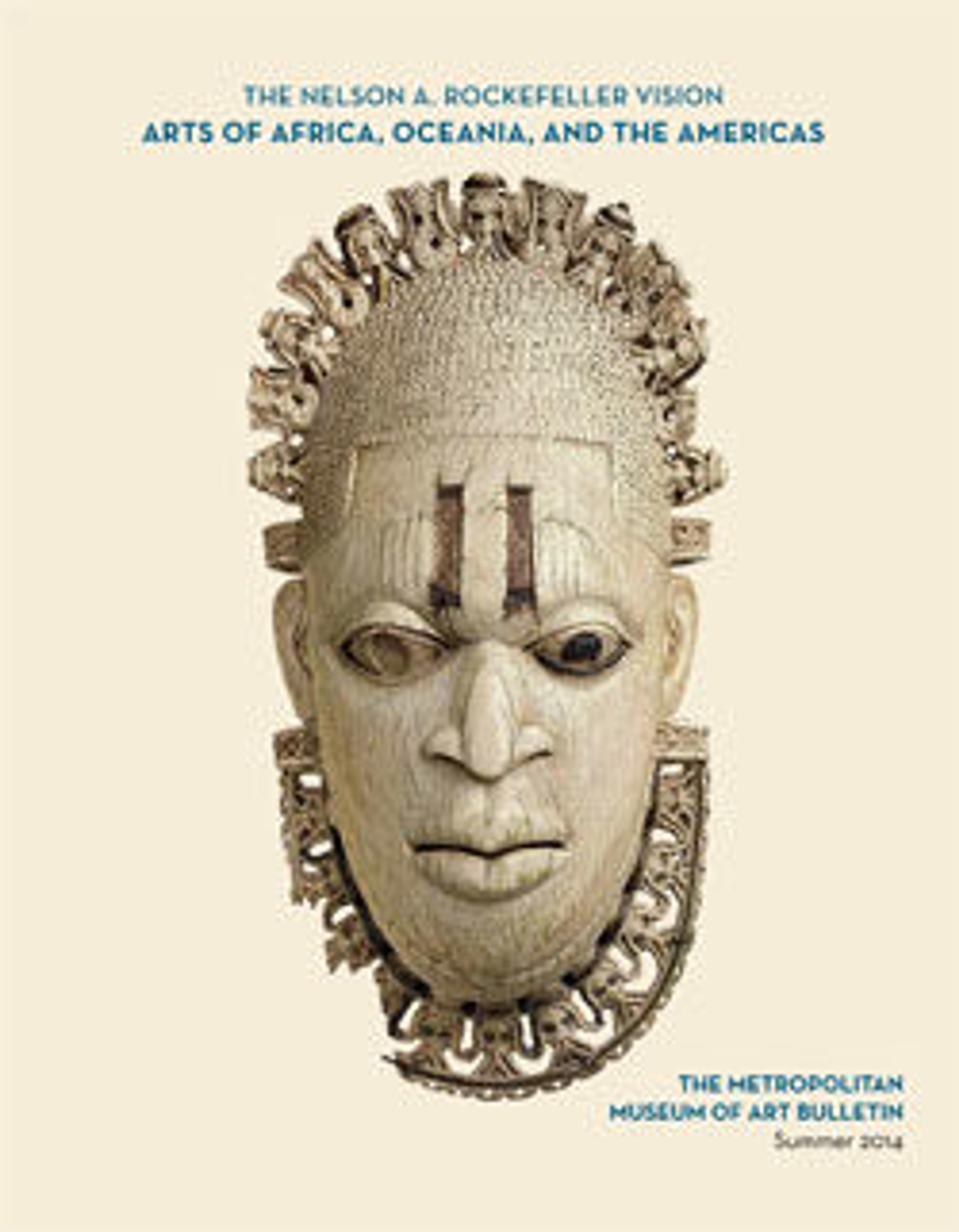Nyeleni figure
Small-scale female figures of this kind are known as nyeleni among the Bamana people of Mali. The figures are an idealization of youthful feminine beauty. The term nyeleni is derived from a traditional Bamana girl's name and has multiple interpretations, including "pretty little one" or "little ornament." Nyeleni figures emphasize a number of distinctive characteristics—most notably, a rather geometrically derived form. They have prominent conical breasts that project sharply from a flattened chest and are counterbalanced by exaggerated buttocks that jut out behind the figure. The arms, legs, and torsos are highly cylindrical. Hairstyles vary but usually exhibit some variation on a crestlike arrangement. The aesthetic beauty of such works is heightened by the addition of beads or metal accessories and oil, which is rubbed into the figure to produce a lustrous surface. These additions are comparable to the manner in which young Bamana women prepare themselves for special occasions.
Young unmarried Bamana men use nyeleni sculpture to represent the ideal marriageable woman they hope to find as a wife and partner. Historically, initiation societies were at the core of Bamana religious, political, and social life. In those southern Bamana communities in which the Jo society was active, all young Bamana men were required to become members. The preparation for the initiation ceremonies, which took place every seven years, required many years of study and work. The training culminated in jofaga, "killing [in] Jo," in which the candidates are symbolically reborn as a member invested with a new adult status. The new initiate then spent the next few months traveling to neighboring communities, spending two to three nights in a village while dancing and singing to display his knowledge of Jo and to earn gifts of money, cotton, or food. The initiate used these figures to enhance such performances and allude to his eligibility as an adult male seeking a spouse.
Social changes in the twentieth century have greatly impacted the role of initiation societies in Bamana culture. With transformations such as urbanization, colonialism, and the embrace of more orthodox interpretations of Islam, initiation societies have become a less essential element in Bamana life. As a result, fewer and fewer villages maintain ritual objects and sacred places associated with initiation societies such as Jo.
Young unmarried Bamana men use nyeleni sculpture to represent the ideal marriageable woman they hope to find as a wife and partner. Historically, initiation societies were at the core of Bamana religious, political, and social life. In those southern Bamana communities in which the Jo society was active, all young Bamana men were required to become members. The preparation for the initiation ceremonies, which took place every seven years, required many years of study and work. The training culminated in jofaga, "killing [in] Jo," in which the candidates are symbolically reborn as a member invested with a new adult status. The new initiate then spent the next few months traveling to neighboring communities, spending two to three nights in a village while dancing and singing to display his knowledge of Jo and to earn gifts of money, cotton, or food. The initiate used these figures to enhance such performances and allude to his eligibility as an adult male seeking a spouse.
Social changes in the twentieth century have greatly impacted the role of initiation societies in Bamana culture. With transformations such as urbanization, colonialism, and the embrace of more orthodox interpretations of Islam, initiation societies have become a less essential element in Bamana life. As a result, fewer and fewer villages maintain ritual objects and sacred places associated with initiation societies such as Jo.
Artwork Details
- Title: Nyeleni figure
- Artist: Bamana numu (blacksmith)
- Date: 19th–early 20th century
- Geography: Mali, Segu region
- Culture: Bamana peoples
- Medium: Wood, metal
- Dimensions: H. 21 3/4 in. × W. 6 1/2 in. × D. 6 in. (55.2 × 16.5 × 15.2 cm)
- Classification: Wood-Sculpture
- Credit Line: The Michael C. Rockefeller Memorial Collection, Gift of Nelson A. Rockefeller, 1969
- Object Number: 1978.412.347
- Curatorial Department: The Michael C. Rockefeller Wing
More Artwork
Research Resources
The Met provides unparalleled resources for research and welcomes an international community of students and scholars. The Met's Open Access API is where creators and researchers can connect to the The Met collection. Open Access data and public domain images are available for unrestricted commercial and noncommercial use without permission or fee.
To request images under copyright and other restrictions, please use this Image Request form.
Feedback
We continue to research and examine historical and cultural context for objects in The Met collection. If you have comments or questions about this object record, please complete and submit this form. The Museum looks forward to receiving your comments.
